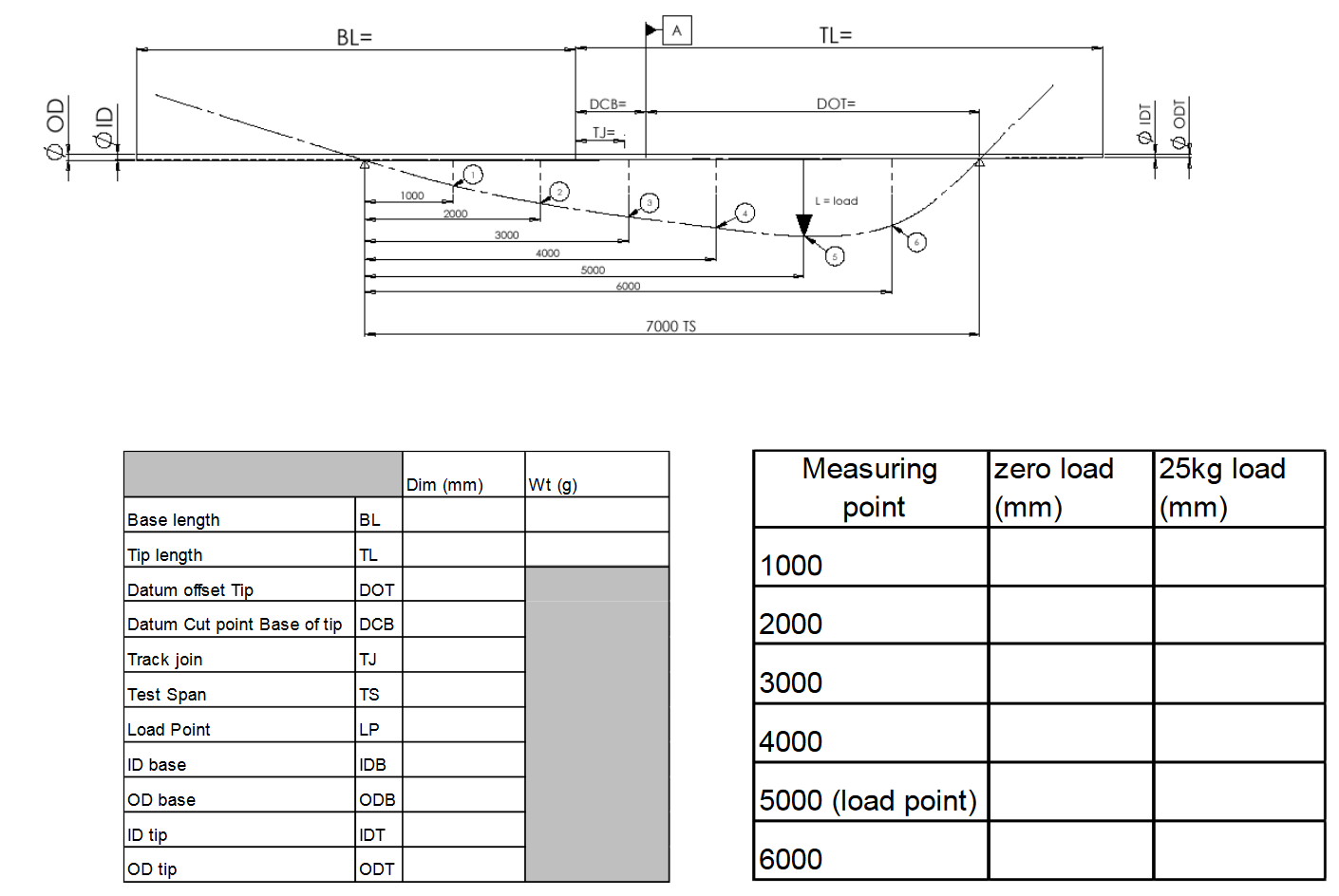How To Bend Test Your Mast
- Support the mast over a span of 6m, 7m or 9m. Just ask us to confirm the span of your class. Be accurate.
- Locate the top reaction point at the black band. Record how far down the black band is from the mast tip as well as from the datum mark.
- Try and make the reaction points as small as possible (i.e. a knife edge is desired). A small bar or Allen key makes a good pivot. Be as accurate as possible with span length as little changes causes a large deflection (deflection is proportional to the 3rd power of span).

- Packing Tape can be used immediately at the pivot point in order to stabilise the mast and stop it from rollings. Tape over the pivot point (i.e. no more than 10mm either side) otherwise this will change the bend deflection.
- Use fishing line and tie a loop around at the mast tip and pull the string along the length of the mast (along the top of the track). Make sure that it touches the mast top/track at the span pivots lengths. You can tape it down at those points as above. The line must be tight at all times.
- The mast should deflect a little bit under its own weight and we will measure this and subtract it from the deflection caused by the 25 kg weight.
- First mark the mast up into 1m increments with a pen or pencil. Mark the load point at 2m down from the tip or the specific point for your class. You can ask us for this info.
- Apply 25 kg with a spring balance or weight accurately at the load point.
- Make sure that the fishing line contact points are at the reaction points.
- With a ruler, measure the offsets from the tight string line to the mast or track surface at the 1m increments.
- With the string still tight, take off the 25kg weight. The string will go slightly tighter as the mast flexes straighter. Again measure the offsets from the string to the mast or track surface.
- Take the 25 kg offset values away from the initial mast sag offsets in order to get corrected deflections.
- Plot the deflections against length in a spreadsheet in order to view the mast blend and compare.
- From here we can calculate the flexural rigidity profile that suits this bend.
- If you're really keen, you can turn the mast through 90 degrees and test the sideways deflections in the same way.

We publish this information in good faith and to assist our customers to get the best performance out of their equipment, we do not take responsibility for customer assembly.
